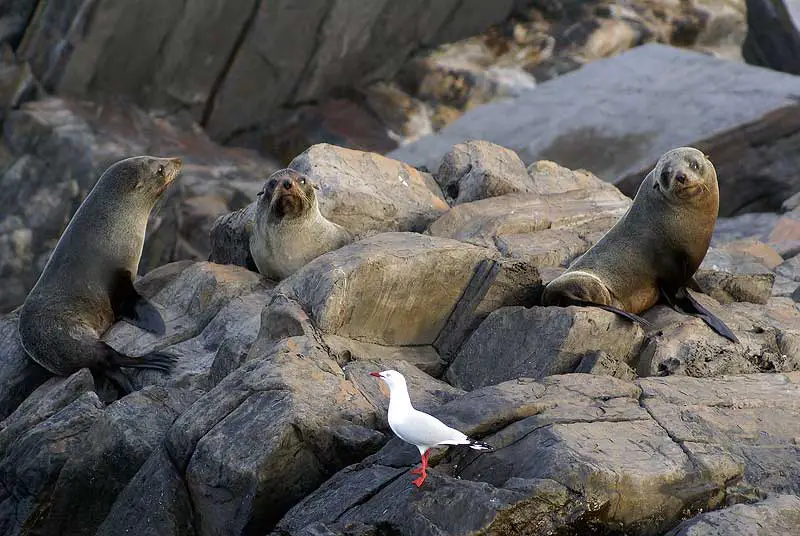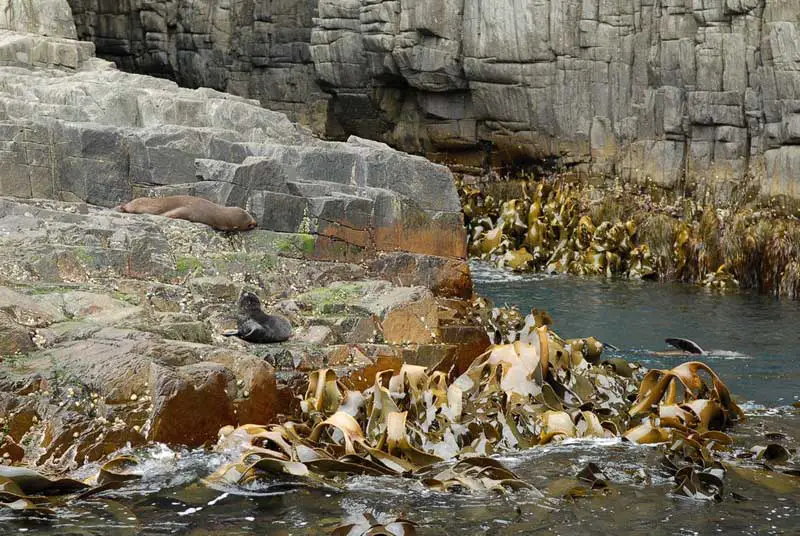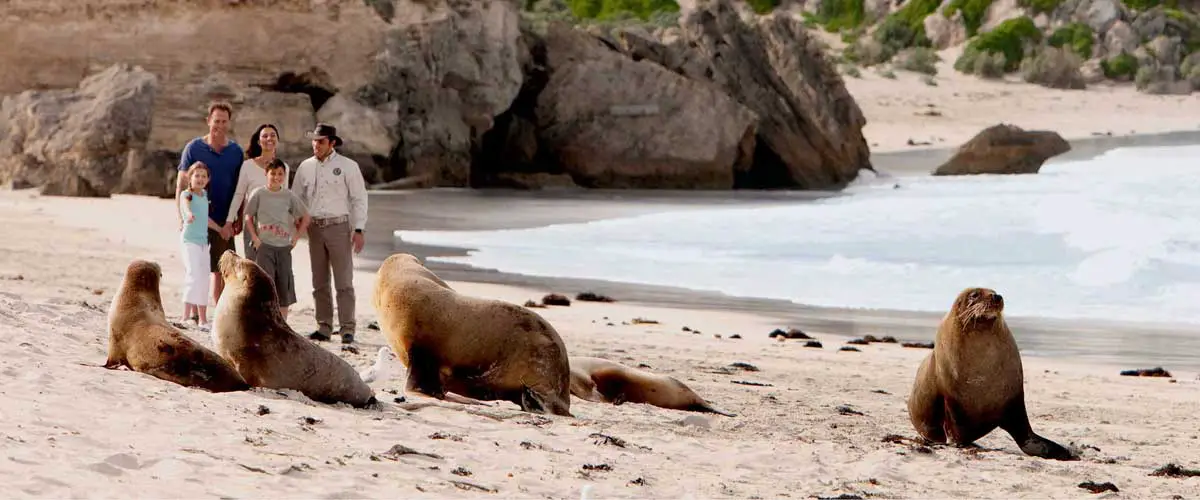The Australian Fur Seal has a relatively restricted distribution around the islands of Bass Strait, parts of Tasmania and southern Victoria. They can be seen hauling out (coming ashore) on islands off South Australia and areas of southern New South Wales such as Montague Island with the occasional animal appearing as far north as the mid north coast of New South Wales.
As it is closely related to the South African Fur Seal, its populations worldwide are reasonable secure although it is occasionally commercially hunted in South Africa. In Australia it is fully protected although its numbers are probably still only half those of the historic pre sealing days. It continues to be vulnerable to disturbance at its breeding sites and suffers some loses as a result of conflict with commercial fishing operations.
Fur seals have large eyes, a pointed face with whiskers and sharp teeth. The Australian Fur Seal, Arctocephalus pusillus doriferus is the largest of all the fur seals. It has a broad head, pointed snout and long backward sweeping facial vibrissae (whiskers). The body is robust and covered in thick brown layered hair except on the front and back flippers. The Australian Fur Seal is sexually dimorphic (males and females are visibly different). The males are larger than the females and when mature carry a dark mane of coarse hair. They have a set of carnivore-like teeth similar to those of a large dog or bear. Like all members of the Family Otariidae (Fur seals and sea lions) they can raise their body onto their front flippers to move around on land.
Australian Fur Seals frequent coastal waters and oceans. Their preferred habitat especially for breeding is rocky islands, which include boulder or pebble beaches and gradually sloping rocky ledges.

Kangaroo Island
Eastern grey kangaroos are a social species and usually live in small groups called ‘mobs’. These ‘mobs’ include one dominant male, about 2-3 females with their young, and about 2-3 young males. As is common in all kangaroos, eastern greys move by hopping, usually around 9 meters every hop. Also characteristic of most kangaroos, the legs of eastern greys are designed so that they expend less energy the faster they are moving, which can be up to speeds of 30 miles per hour. Eastern grey kangaroos spend most of their day under the shade, then move out at dusk to feed until dawn. Male eastern grey kangaroos often ‘box’ or exhibit other types of aggressive behaviour to establish dominance. The dominant male is the most likely individuals to mate with a female in estrus. When a female eastern grey kangaroo reaches estrus, the male will approach and sniff various parts of her body including her pouch and urogenital area. He may also make clucking noises and paw her head and tail, a behaviour characteristic of many kangaroo species.
Eastern grey kangaroos are seasonal breeders (spring and early summer), unlike some kangaroo species such as the red kangaroo or even the closely related western grey kangaroo, which breeds continuously as long as the conditions are good.
A joey, or baby kangaroo, usually stays in the pouch for 11 months during which it feeds from its mother’s milk. It feeds for an additional 9 months, on average, from the mother’s milk, although it leaves the pouch at 11 months. During this time, the mother provides protection and food and also guidance as the joey comes closer to becoming fully independent.
With its streamlined shape and strong flippers, the Australian Fur Seal is an agile swimmer and can dive to depths of 200 m to catch fishes and squids. Despite its cumbersome appearance, it is also quite mobile on land, even over rocky terrain. Fur seals differ from other seals (true seals) because they have external ears and the ability to use all four limbs to move across land. Also, fur seals have two layers of fur while other seals have only one layer.

Bruny Island, Tasmania
Australian Fur Seals feed on a variety of bony fish species plus squid and octopus. They are voracious and skilful hunters in the water and are not adverse to taking advantage of situations where fish are corralled by nets and fish farms.
During the 1800s the Australian Fur Seal was heavily hunted for its coat and the population dropped from several hundred thousand to only 20,000. Entanglement in discarded fishing gear is also a threat. All Australian marine mammals are protected and the Australian Fur Seal population is making a recovery.










